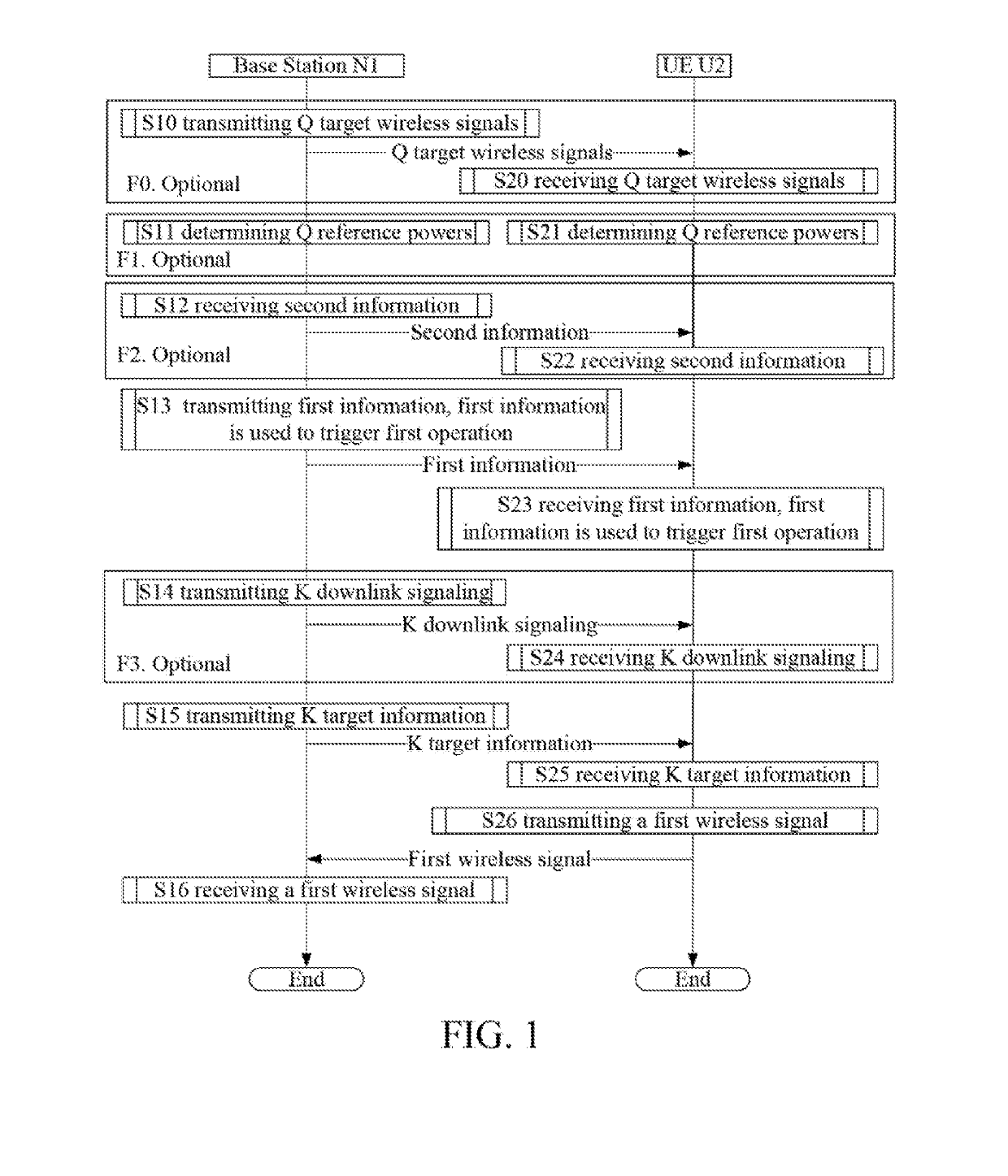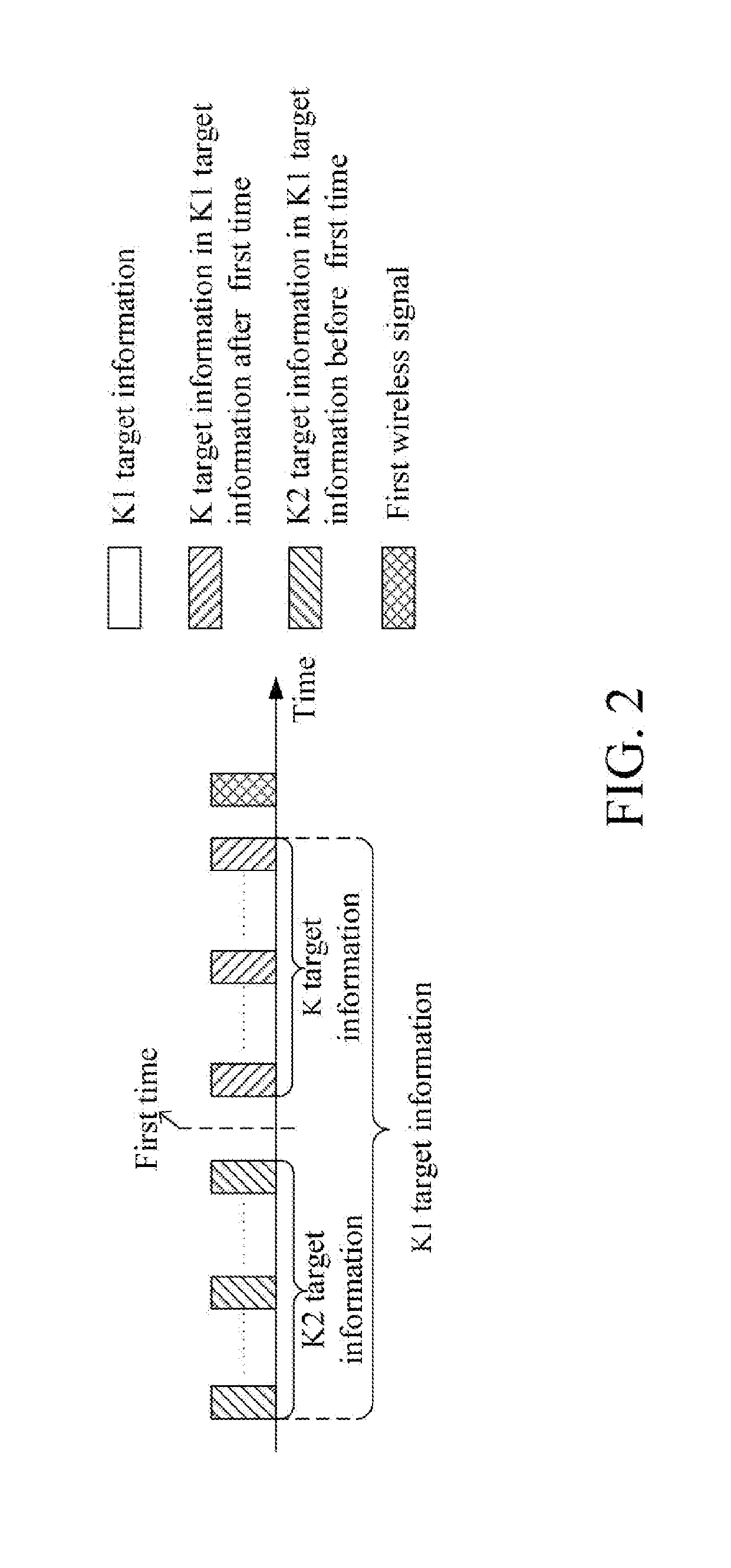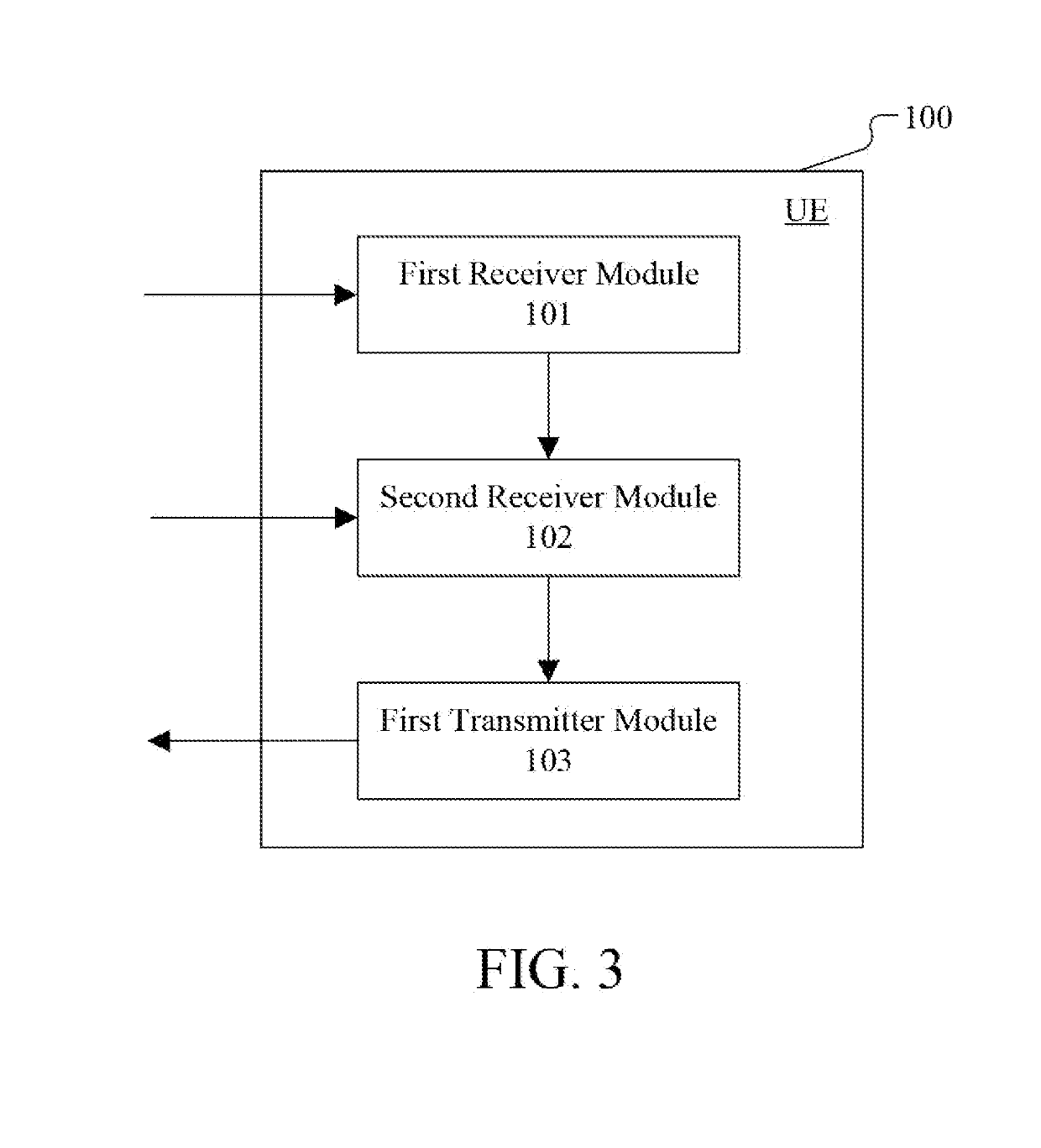Method and device for power adjustment in ue and base station
a technology of power adjustment and wireless communication system, applied in the direction of transmission path sub-channel allocation, power management, wireless communication, etc., can solve the problems of new problems to reset accumulation in the uplink power control mechanism, significant differences in long-term channel fading experience, and large so as to simplify the power control complexity and reduce the complexity of the uplink power control of the ue
- Summary
- Abstract
- Description
- Claims
- Application Information
AI Technical Summary
Benefits of technology
Problems solved by technology
Method used
Image
Examples
embodiment 1
[0175]Embodiment 1 Illustrates a flow chart showing a first information transmission in accordance with an embodiment of the present disclosure, as shown in FIG. 1. In FIG. 1, the base station N1 is a maintenance base station for the serving cell of the UE U2. The steps identified by block F0, block F1, block F2 and block F3 are optional, respectively.
[0176]For the base station N1, Q target wireless signals are transmitted in step S10; Q reference powers are determined in step S11; the second information is transmitted in step S12; the first information is transmitted in step S13, and the first is used to trigger the first operation; K downlink signalings are transmitted in step S14; K piece(s) of target information is(are) transmitted in step S15; the first wireless signal is received in step S16.
[0177]For the UE U2, the Q target wireless signals are received in step S20; the Q reference powers are determined in step S21; the second information is received in step S22; the first in...
embodiment 2
[0185]Embodiment 2 Illustrates a time domain diagram for triggering a first operation, as shown in FIG. 2. In FIG. 2, the square marked by the thick line frame is one of the target information of the K1 target information, the square filled with slashes is one of the K2 piece(s) of target information, and the square filled with backslashes is one of the K piece(s) of target information. The K1 pieces of target information is composed of the K2 piece(s) of target information and the K piece(s) of target information.
[0186]In Embodiment 2, in a given time window, the UE receives K1 pieces of target information in total, and the UE receives the first information at a first time. Among the K1 pieces of target information, K piece(s) of target information is(are) after the first time in the time domain. Among the K1 target information, K2 piece(s) of target information is before the first time in the time domain. The K1 is equal to the sum of the K and the K2. The first wireless signal of...
embodiment 3
[0192]Embodiment 3 Illustrates a structural block diagram of a processing device in a UE, as shown in FIG. 3. In FIG. 3, a processing device 100 in the UE comprises a first receiver 101, a second receiver 102 and a first transmitter 103.
[0193]The first receiver 101 is configured to receive first information; the first information being used to trigger a first operation.
[0194]The second receiver 102 is configured to receive K piece(s) of target information.
[0195]The first transmitter 103 is configured to transmit a first wireless signal.
[0196]In Embodiment 3, a transmission power value of the first wireless signal is a first power value. The first power value is irrelevant to all piece(s) of target information received prior to triggering the first operation. The K piece(s) of target information is(are) received after triggering the first operation. The sum of K power offset value(s) is used to determine the first power value. The K power offset value(s) is(are) respectively indicate...
PUM
 Login to View More
Login to View More Abstract
Description
Claims
Application Information
 Login to View More
Login to View More - R&D
- Intellectual Property
- Life Sciences
- Materials
- Tech Scout
- Unparalleled Data Quality
- Higher Quality Content
- 60% Fewer Hallucinations
Browse by: Latest US Patents, China's latest patents, Technical Efficacy Thesaurus, Application Domain, Technology Topic, Popular Technical Reports.
© 2025 PatSnap. All rights reserved.Legal|Privacy policy|Modern Slavery Act Transparency Statement|Sitemap|About US| Contact US: help@patsnap.com



